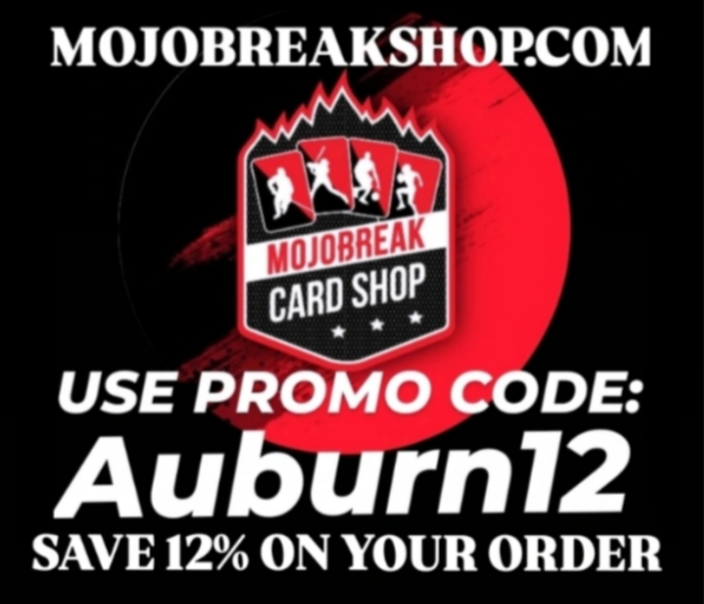It all began when brothers Benito and Giuseppe Panini were in Italy running a newspaper distribution business and in 1960 bought a bunch of soccer player stickers (called figurines) from someone in Italy who couldn’t find a way to sell them. The brothers re-packaged them and in one year sold 3 million packs and a business was born. In 1961 15 million packs were sold. In 1962 29 million were sold. Today, old soccer stickers from that era are treasured and valued like vintage baseball cards.
- Related: Card Tank: The Topps Company
The Panini Group has expanded in the 50 years plus since into other areas, but stickers still remain a huge driver for the business. Overall, the collectibles part of Panini’s business provides the largest revenue stream. In 2009 they reported total revenues of $1 billion, mostly from business done in Europe. By comparison, Topps at it’s peak could get to about half of that number. The $1 billion number is revenue, not profit. Private companies typically never disclose how much they actually make in profit. Some of the Panini Group’s businesses are high margin, low/no competition so you can imagine they make a decent chunk.
Panini is a massive company and only a small percentage of their bankroll is tied up into the production of American sports cards. But it doesn’t take much money to wipe out competitors Upper Deck and Topps in the U.S. space. It started in 2009 when Panini entered the U.S. market and flexed it’s muscle. Upper Deck and Topps were making NBA basketball cards in 2008-09 and were in the running to have their licenses renewed by the NBA. But Panini is a billion dollar business and swooped in to land an exclusive. You can believe it all came down to money. Topps is a conservative spending company and they were looking to reduce their licenses even if it meant losing a segment of the American market. Upper Deck was just beginning to go through some legal and financial trouble but they didn’t have as much cash to blow as Panini did anyways. Upper Deck is a private company but did disclose at it’s peak they were a $200 million a year business. Not bad but a far cry from the $1 billion Panini can rake in. The fact that Panini has a strong overseas brand name probably didn’t hurt in landing the NBA deal either. Globally, the NBA might be the most popular sport in the world behind Soccer. And while it’s hard for people in the United States to grasp, worldwide, Panini is a bigger brand and has more resources then either stateside card competitors Topps and Upper Deck.
Panini entered the NHL market in 2010 and produces licensed hockey cards along with Upper Deck. In 2011 Panini obtained a Major League Baseball Players Association (MLBPA) license. Not to be confused with Topps’ exclusive MLBP (Properties) license. Topps can show images of players in uniform, include team names & logos on cards, etc – Panini cannot. There have been rumblings that Panini may get a Properties license….. perhaps soon. The MLB baseball card market is the largest in the United States when compared to the NBA and NFL, despite the latter two being more popular with fans as a sport and on television. If Panini was flashing cash to the NBA, NFL, and NHL you can bet they will try and get in front of MLB Properties decision makers and try and write a big check. It’s up to the MLBP if Panini will ever be able to produce licensed MLB cards that are so popular in the U.S. market.
If true that Panini can generate revenues in the $1 billion annually from some of the businesses listed below, then money spent in the U.S. sports card market is a drop in the bucket for the company. In fact, there is probably a long term plan in place where the Panini Group doesn’t expect to see a huge return on American sports cards. Meaning they are willing to shell out cash to obtain licenses and grow their presence in the U.S. without worrying about the bottom line of the balance sheet.
It may very well be that Panini doesn’t “make money” on their NBA, NHL or NFL cards. But Panini’s goal is most certainly long term profits and not a short term money grab. Panini’s main sources of revenue happen outside the United States. Prior to 2009 collectors of sports cards may have been unfamiliar with Panini, but you can see why they have been able to win licensing battles against the weaker U.S. sports card players. Panini has resources that Topps and Upper Deck don’t and that can woo any licensing exec with the leagues. For many years U.S. card companies had been going broke and now a knight from Italy shows up with checkbook in hand! The tone was set when the NBA kicked Topps and Upper Deck out, when both expressed interest in continuing making basketball cards. In just three short years Panini is now considered the second largest producer of sports cards. That’s how weak the market was when Panini came to the U.S. and expect them to continue to take market share in the category.
How Panini Rakes in $1 Billion Worldwide:
Stickers
The company has built it’s brand around the globe thanks in large part due to their massive production of collectible stickers. Panini dominates this niche by obtaining licenses and marketing the stickers usually to a younger audience. They’ve produced stickers for just about everything under the sun. Including popular kids movies Cars, Brave, Ice Age and Spider-Man.
Their sports stickers might be familiar to American card collectors. In recent years they have produced sticker collections for NBA, NFL, NHL, various soccer versions including FIFA World Cup, UEFA, Manchester United and more. According to Panini Group, collectibles and specifically stickers have provided the company an opportunity to grow. This is probably a high margin business. It doesn’t cost very much to produce the stickers Panini makes.
Trading Cards
A focus for American collectors, but this is just a small subset of the Panini’s overall business. In 2009 the Panini Group decided to take their piles of cash and enter the United States market. USA collectors recognize the Panini Group subsidy Panini America as the face of the state side card company. Panini blew competitors Upper Deck and Topps out of the NBA basketball card market to land their first US sports license. But the big acquisition to help aide in establishing operations in the U.S. was the purchase of Donruss Playoff in March 2009. Donruss was a well known U.S. sports card brand that had successful titles including Elite, Contenders, Certified, Threads, National Treasures and more. Panini immediately took over the NFL license that Donruss had. The sale of Donruss came at a needed time for both companies. Donruss had lost it’s MLB license in 2006, severely reducing it’s revenue potential and Panini needed a brand, and talent (employees) who understood the U.S. sports card market. Panini also took talent from rival card company Upper Deck. Several employees left California based U.D. when they were going through legal and financial troubles.
Panini has entered the U.S. market and spent money. They spend more to market their products then competitors Upper Deck and Topps. At key trade shows like the NSCC and the Las Vegas Industry Summit the corporate booth Panini has usually doubles the size of Topps & Upper Deck (Topps recently has not had a corporate booth at the Vegas Summit). Topps is an established American brand that was purchased off the open stock market in 2007 by Madison Dearborn Partners and Tornante. Since the sale it appears Dearborn and Tornante were seeking to capitalize off the $30 million in estimated profits that come out of the business annually. Topps does not have to market it’s products very much because of it’s iconic brand status and they have no reason to innovate a space they have dominated since the 1950’s in the United States. Upper Deck is considered an industry innovator since it was founded in 1989, but they have fallen on hard times and were hurt the most by the economic downturn in the U.S. that started in 2008. Upper Deck can no longer market their products like in years past and have lost out on some key U.S. sports licenses (NBA, MLB, NFL).
Distribution Business
Panini does big business in Europe. So they have a distribution center where they can get product into 500,000 stores in Europe within 72 hours. They not only distribute their own collectible products through this channel but they will distribute other companies books, comics, pre-paid phone cards, toys, soccer merchandise and many other items through this channel. This means money in the bank for Panini. They run popular online soccer merchandise store “FootCenter” through this channel. Panini also has a distribution center in Italy, dubbed PAN, where essentially the same business goes on. Panini is able to get their products into the hands of customers very easily because they own their own distribution network. They also can earn revenue by distributing other companies products. Sounds like a great business if they can dial in their operating costs.
Panini Digital
This is software that analyzes the movements a player will make during a soccer match. This data is then sold and used by soccer teams, media groups, video game companies and other interested parties. Much like statistical information in Baseball, having advanced metrics to determine the value of a player is key in a sport like soccer when there is not much scoring or other simple statistics being recorded.
Publishing
Behind collectibles, this is the Panini Group’s biggest business. It’s also it’s fastest growing. Over 4,000 comics, magazines and books are published each year by Panini. They publish primarily publications related to kids and their interests, establishing Panini as one of the leading publishers of youth oriented products in Europe. Huge revenue stream. Buying a popular Marvel, DC, or Vertigo comic in Europe? It probably came through their publishing and distribution network. This business pumps huge money into Panini’s bank accounts.
The Future of Panini Group
Things appear to be going well. They have a strong footprint in Europe and other parts of the world. This isn’t a sports card business. That’s just a small piece of the pie. But they have cash other U.S. sports card competitors don’t. Panini will easily be able to win over leagues that hold the key to licensing with their balance sheets that show a killer worldwide operation of businesses. Panini won’t innovate the sports card world like Upper Deck did in 1989. But their presence is much needed to help stabilize an industry that has seen countless companies big and small go broke.
It takes a lot of money to enter the U.S. sports card market. Licensing with the big pro sports leagues doesn’t come cheap and they like to see you have a multi-million dollar bank account……. even after you cut that check to them. Panini is a dominant player in the licensing game. Some recent licensing deals include: Michael Jackson, Justin Bieber, and Disney. Those don’t come cheap. The fact that Panini is not reliant on sports cards to make or break their budget is a collector’s dream. Even if you don’t enjoy their products, I’d advise being patient and give them a chance. At any moment, these Italian billionaires could just go back home, milk Europe, milk South America, milk the portions of their business that have unlocked unspeakable amount of riches for them over the years. They don’t need American sports cards to make money. It’s literally a drop in the bucket for them.
Here is a question. What is your favorite sports team? What would you rather have, the owner of that team to have so much money that he will spend whatever it takes to try and win? Or an owner who looks for loose change under seats after games? We know the answer. Panini may not be on the same spending level as Mark Cuban or Jerry Buss, but they have the biggest wallet in the sports card game at the moment. Dearborn and Tornante’s Topps have a huge collective wallet as well, but just don’t have any reason to spend it to grow their sports card business. In fact, Topps has failed and lost millions when trying to innovate and grow the business. Dearborn is a leading private equity firm and has ownership stakes in dozens of companies but they are not related to sports or even collectibles (Metro PCS for example). Panini has reason to spend cash though. Panini has reason to try and grow their business. They are just breaking into the U.S. sports card market and want to make it a lasting business. It will take many years to see if that will happen.



